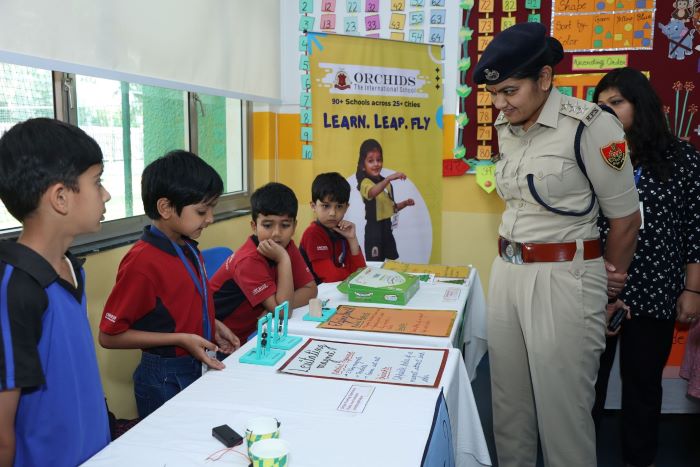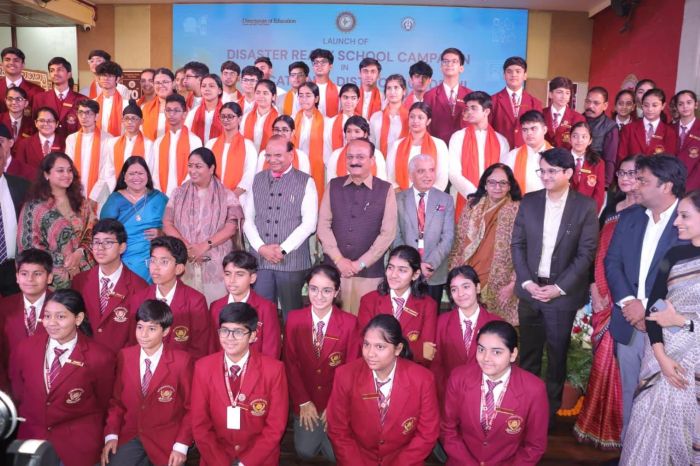
FICCI Alliance for Re-Imagining School Education (FICCI ARISE) in collaboration with Shardul Amarchand Mangaldas & Co on May 29 launched the 4th edition of Model Self – Financed Independent Schools (Recognition and Fee Regulation) Code for states to regulate the establishment and operation of new schools and recognition of existing schools as self-financed independent schools. The paper calls for liberalizing country’s private schools and allowing them to run for profit.
Authored by Vardan Kabra co-founder and the Head of School at Fountainhead School, Surat and Anupam Gupta, a consultant in thematic research, the 143-page report is essentially an advocacy white paper illustrating the need of three major bold reforms in the Indian school education regulatory framework to promote private schools in the country.
The first reform proposed in the paper is the Rationalizing of the Right to Education Act (RTE) input-based norms. The report makes a recommendation for Education vouchers for individual students instead of RTE 12(1)(c). The second reform calls for allowing schools to operate for profit and therefore change of regulations to allow for various funding models of schools and raising capital. The third reform advocated in the report is public funding for private provision as against government spend, private schools do the job on much less cost.
“This paper aims to catalyze a paradigm shift in thinking about how education needs to be governed and delivered in India…We hope that it will start many dialogues that will eventually lead to the vision that this paper starts off with,” write the authors in the preface of the report. The paper offers several arguments and analysis to better the challenges that school education in general is facing in the country.
Through this report we aim to bring forth some pertinent facts about private sector contribution in improving access and quality in school education and suggest structural reforms that shall pave the way for realising the goals set in the NEP – that offers a number of well-reasoned and bold reformative steps in the right direction for disruptive change to meet the future learning needs.
Private sector is truly aligned with Government’s vision of transforming India as a hub for ‘skilled Human Resource’. However, to realise this vision government should consider creating an enabling policy environment for the private players, where they are seen as ‘meaningful contributor’ to the national building. If measures are not taken on time, it may also swiftly shift India’s ‘Demographic Dividend’ to a ‘Demographic Disaster.’
As against any major country across the world where the percentage of students attending unaided independent schools barely reaches the double digit, nearly 47 per cent of Indian children study in private schools. Their rise is an important, and often, unheard story about our education system. Typically perceived as ‘elite’, the growth in the private sector has actually been powered by a wave of low-and middle-income families seeking better education for their children. Nothing illustrates this better than the fact that of these private school enrolments, 70% of the students study in private schools that charge less than INR 1000 per month, as against Government schools spend of about INR 30,000 per child per annum. While the number and spread of independent schools has grown multifold, regulations that were originally framed to govern government schools continue to regulate independent schools too. This acts as a hindrance for quality players to enter the sector.
Despite all the regulations and the philanthropic mandate, private schooling is nearly at a $100 bn size, having grown at about 15% CAGR over the last decade. Given the size of this market, rationalizing regulations and removing the philanthropic mandate could push the growth up to 25% CAGR, pushing the sector to nearly $200 bn by 2025.
Manit Jain, co-founder of Heritage school and chairman of FICCI ARISE (FICCI’s Alliance For Reimagining School Education): “There is currently no incentive for large corporates with deep pockets to step into this sector.” According to Jain, the huge demand for funds for the sector needs a clean structure that allows for profit. This single move can pave the way for credible and trusted names to invest, allow foreign investment to come in, banks to lend and energise the whole sector.”
As per UNDP estimates, the total financial requirement for India to reach SDG 4 by 2030 averages $173 billion per year, far exceeding the current government budget of $76.4 billion a year for education. It’s obvious that the government won’t be able to shore up investments to the required levels and would need significant private participation. With the current regulatory structure and obsession with keeping it ostensibly clean through not for profit mechanisms, we’re ensuring our students are deprived of quality education. If we need investments, we need to incentivise investors. How can we expect institutions to invest Rs 100 crore in setting up schools and not expect a return on their capital?
A case in point is the Visionary Uttar Pradesh Self-Financed Independent Fee Regulation Act (2018). The parent community is protected with fee mechanisms in place and the investors’ surpluses has been capped, giving enough room to ensure investment flows in the sector.
The paper also uses the references of Economists Ajay Shah and Vijay Kelkar agreeing that given the weak Indian state capacity with respect to education, India needs to start looking at the three pillars of education separately: funding, regulating and producing the government should fund students instead of school, but regulate schools to ensure learning outcomes are met. Production however should be opened up freely to private players, while the government may need to also run schools in under-served areas.
Arguing for profit schools, the report say that the philanthropic requirement is elitist. Running a school is a full-time occupation, and only very few school owners can afford to forgo a wage for their efforts (which they legally must, as trustees in a trust or society, unless they can draw a salary for a specific service offered)
Philanthropy cannot substitute the scale of the private sector. Estimates find that total spend on philanthropy (on all causes and sectors, including education) is INR 55k cr while household spend on just private schooling is pegged at INR 1.75 lakh cr, three times that amount. While some private schools are indeed run by philanthropists, this suggests that the majority of schools are run by those who see this as a profit opportunity, and there is nothing inherently evil about profit. Profit making entities are entirely capable of serving their community and if we look around, it is easy to see that they do it to a far greater extent than government or philanthropy. In any case, for the most affordable private schools with low fees, scope for ‘profiteering’ is minimal because competition is intense, not because the law prevents it.
Unwillingness to recognise schools as micro, small or medium enterprises has had devastating effects for the private school sector in the aftermath of COVID19 in terms of credit availability. Even as schools gasp for financial support, they continue to make concessions for parents who can’t pay fees and the demand for private schools is unlikely to reduce in the medium term. School revenues have decreased between 20-50% because of non-payment of fees as well as drop in enrolments. While schools continue to keep students engaged with lessons, extra curriculars, etc., online learning is not ideal for schools and students in low-resource settings. Inputs delivered by schools have not translated to outcomes – as measured by parent perception of online learning. In the long term, learning outcomes, especially among the weaker sections, may be severely impacted. Many affordable private schools have already closed down and may never reopen.
Transparent structures such as regular body corporates with strictly defined disclosure norms should be allowed for setting up and operating schools as is allowed in the states of Uttar Pradesh and Haryana. At a 20% profitability margin, and a 25% net tax rate, taxes from the sector can amount to a significant sum of $10 Billion, all of which can be ploughed back into education. This shall promote social entrepreneurship, create competition and raise levels of quality and affordability.








